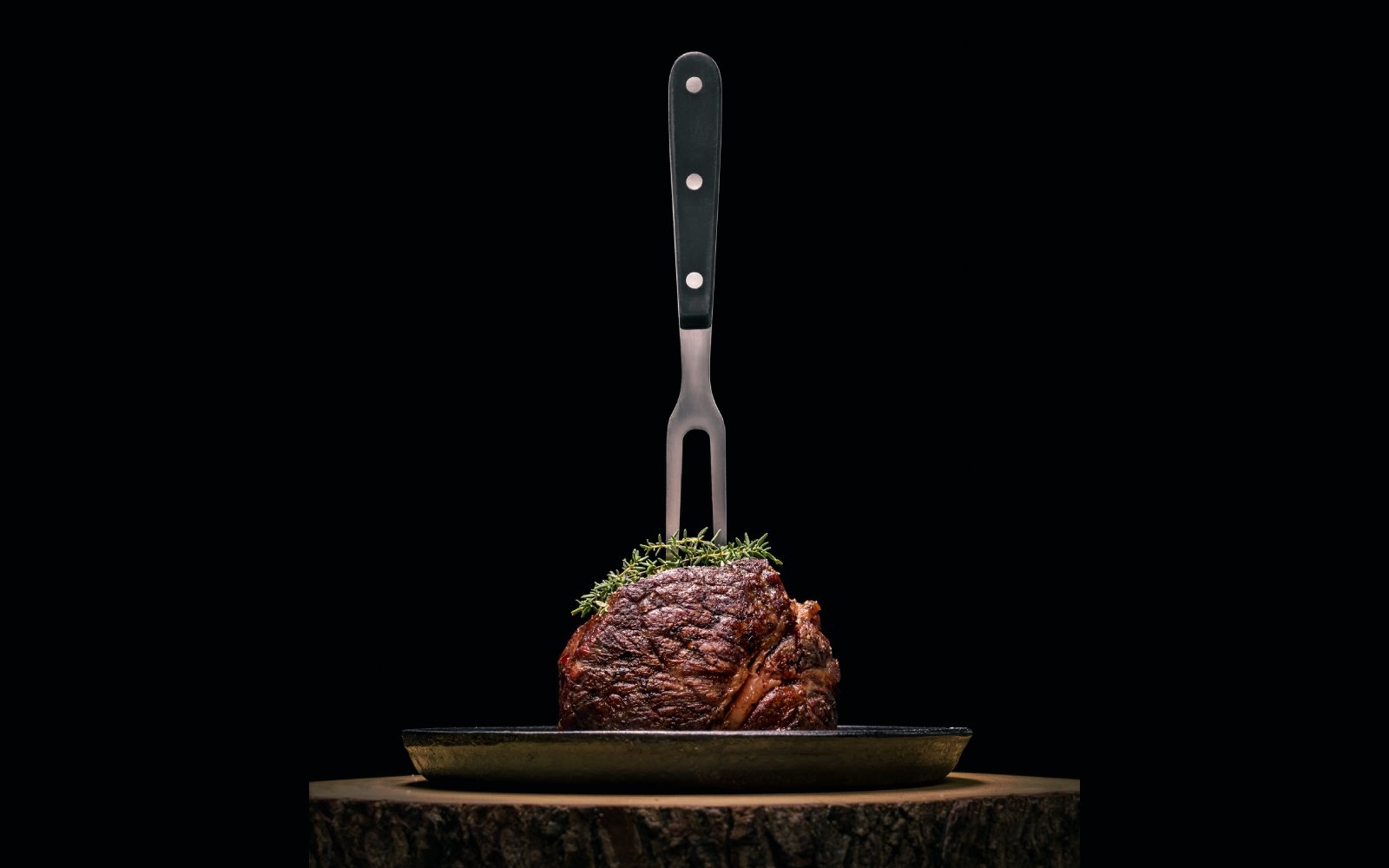Why Steaks Should be Served Straight From the Grill
Discover > Texas Home Cooking > Why Steaks Should be Served Straight From the Grill
Texas is renowned as the ultimate source of premium quality meat that's just perfect for grilling medium-rare steaks. A few weeks back, an individual, full of enthusiasm, procured a rather pricey T-bone steak from a local butcher. They hurriedly brought it home, all set to complement it with a finely-aged red wine.
Their two-zone grill was promptly ignited, the necessary temperature was reached, and the cooking of the meat began. However, despite their assumed prowess at searing a delectable medium-rare steak, the attempt failed to meet expectations this time. The T-bone steak was overcooked, and to their disappointment, it turned into a chewy disaster.
A flurry of questions followed. What caused the overcooking? Was the temperature of the steak off the mark? Their inner culinary critic was relentlessly reproaching them. To make sense of the mishap, they sought insights from a well-regarded expert in the field, "Meathead" Goldwyn.
Meathead Goldwyn’s Advice on Cooking Medium-Rare Steaks
It turns out that cooking a good steak is a science and one that requires a certain amount of know-how. It’s not just about finding out which steaks are the best or which steaks are the most tender.
"Meathead" Goldwyn is an acclaimed American food writer known for his in-depth knowledge and scientific approach to cooking; Goldwyn has contributed significantly to the culinary world, particularly in the arena of outdoor cooking. His work, including his book "Meathead: The Science of Great Barbecue and Grilling", has educated and inspired countless cooking enthusiasts worldwide.
Goldwyn wrote that steak should be served straight from the grill, with the desired doneness. He tells readers never to rest their meat. Otherwise, they shall face the consequences of an overcooked steak. According to Meathead, you mustn’t rest your meat because there is still heat energy remaining in the steak’s exterior. So, what is carry over cooking? This is when foods are stopped from actively cooking and allowed to balance out under their own retained heat.
In the culinary world, it's widely accepted advice from most chefs and culinary connoisseurs that allowing a steak to rest is not a mere suggestion but a rule. However, Meathead proposes a different perspective, asserting that the heat from the steak's surface penetrates towards its center, which could potentially overcook the steak. This carryover cooking occurs when the residual heat within the meat continues to cook it even after removing it from the heat source. So, how long does carryover cooking last? According to Meathead, the extent of this carryover cooking increases the longer the meat is left to rest.
Regarding the optimal temperature for cooking steaks, Meathead suggests that a steak initially cooked to 130°F will continue to rise in temperature, even after being taken off the heat. After resting for approximately 15 minutes, the steak's internal temperature can reach between 135°F and 140°F.
The Science of Carryover Cooking
When the meat is resting, as long as there is a substantial difference in temperature between the outside and inside of the cut, the heat will expand and travel inward, cooking the meat further.
The central principle of carryover cooking is that heat has a tendency to be shared. In this case, the heat of the exterior is transferred to the cooler meat interior until an equilibrium has been reached.
The Pros of Resting
The widespread belief that allowing the meat to rest locks in its juices is met with disagreement from Meathead Goldwyn. This contention was put to the test by Goldwyn and physicist Professor Greg Blonder, co-author of Goldwyn's book, "Meathead: The Science of Great Barbecue and Grilling".
Their findings reveal a negligible difference between the juice retention of a rested steak and one served immediately off the grill, with the former losing just an extra teaspoon of juice. This lost juice isn't wasted, but rather, mingles with the side dishes on the plate like mashed potatoes or beans, boosting their flavor.
Furthermore, they found that steaks served right from the pan tend to be juicier as they aren't overcooked, debunking the "rest is best" theory.
Letting your Meat Reach Room Temperature
Meathead once read a cookbook that recommended its readers to let roast beef sit at room temperature for an hour. One reason for this was to allow the juices to be reabsorbed and redistributed within the meat.
Goldwyn, however, claims that this technique is not only unnecessary but also risky. He says that microbe numbers grow rapidly when meat is left at room temperature, with bacteria doubling every 20 minutes. In this way, the grilling guru advises us not to let the meat rest from both a quality and safety standpoint.
One bacterium present in beef is E. Coli, which causes many bacterial infections, such as hemorrhagic colitis (or what we call bloody diarrhea). Heat destroys these microbes, making your steak safe to eat. On the other hand, letting a piece of meat rest at a cooler temperature for longer increases the risk of it becoming a breeding ground for bacteria.
How to Serve Steak
To prepare a perfect steak dinner, one must understand how to cook steak properly. Often, a filet mignon is selected for its tenderness and flavor. The process begins by rubbing the steak with olive oil, seasoning it with salt and pepper, then pan-searing to develop a flavorful crust. This technique is known as pan-seared steak.
After the steak has been cooked to the desired doneness, it's topped with garlic butter for an additional layer of richness. The steak is then served with creamy mashed potatoes, made luxurious with the addition of sour cream and butter, and green beans sautéed in garlic and butter for a classic side dish.
For a flavorful twist, consider a pepper steak recipe or a steak topped with creamy sauce. Don't forget the garnish of chopped parsley for a pop of fresh flavor.
While steak recipes are the highlight of the meal, the side dishes for steak should not be overlooked. Onion rings provide a crunchy contrast to the tender steak, while a roasted chicken (What wine goes well with roasted chicken?) can serve as an alternate protein for those who prefer poultry.
What is Steak Juice?
It was previously mentioned that it is commonly believed resting a steak after cooking helps to preserve its juiciness. But what makes up this mysterious "juice" in a steak? It involves more than just water—it includes fats and the meat's gelatinous connective tissues.
Intriguingly, our saliva, triggered by the mouthwatering taste of the steak, also contributes to the perceived juiciness. However, as per Meathead, the process of resting meat isn't necessarily the key to a juicier steak—it's not as straightforward, with countless factors involved. In Goldwin's words, "The effect of resting meat is negligible."
Culinary experts and food scientists highlight tenderness, flavor, and juiciness as the principal qualities to consider in a steak. As Meathead explains, our understanding of 'juiciness' is more complex than it seems. An article in a 2011 issue of Meat Science Journal stated that "Neither the water content of the meat nor the cooking loss can fully account for the juiciness of the cooked meat product."
In essence, 'juiciness' is a subjective experience shaped by human perception.—not an objective measurement. Consequently, there's no device capable of quantifying a steak's juiciness.
According to Meathead, our perception of juiciness is influenced by the following factors:
Free water in the raw meat
Water bound with proteins
The location of the water (usually defined by the structure of the muscles)
Melted and softened fats (what some call “marbling”)
Collagen that has turned into gelatin
Our saliva is activated by seeing and hearing sizzling, as well as by tasting seasonings like salt.
In simple terms, juiciness is not only determined by the amount of water. That's why we start salivating when we see a delicious steak.
Meathead Goldwyn also writes that several factors influence how juicy a piece of steak is:
Drip loss
Cooking method
Cooking temperature
The temperature of the meat when it was removed from the grill
Breed of the animal
Age of the animal when slaughtered
Age of the meat
How the meat was packaged
Whether the meat was frozen, and how it was frozen
How the meat was stored
What the cow was fed
How the cow was slaughtered
How the meat was tenderized (mechanically or by enzymes)
Whether the meat was salted or brined
And even what wine you have paired with the meat!
The liquid is generally bound by protein and kept in thin spaces in the muscles. This is why when you cut into or grind a piece of raw meat, very little liquid is lost.
How is Juice Produced?
When meat is cooked, the juice is produced at various stages. The first lot of juice is produced when water contained in the muscle fibers seeps out through wide channels in the meat. As the heat in the meat increases, the tightly bound water is freed.
As the temperature reaches 135–145°F, the collagen in the connective tissues shrink and turns into gelatin. This process squeezes the muscle fibers, which ooze more liquid.
At 140°F, more juices are released from the meat, with meats cooked at a higher temperature coming out drier. Depending on the temperature or the amount of time your steak is cooked, there may be a 10–25% water loss.
A well-done steak is made up of around 60% water. But this liquid cannot escape when the meat is cut, since it’s bound by proteins and held as a result of capillary action.
To Rest or Not to Rest?
Grilling expert Meathead Goldwyn suggests a different way of doing things - he says you shouldn't let the meat rest after grilling. He says that the meat could get overcooked due to carryover cooking.
On the other hand, people who believe in letting the meat rest argue that it allows the juices to soak back into the meat, making it more flavorful.
The debate goes on, and it's up to you to decide which approach you prefer.
One question remains – whose side are you on?
To know more about how to prepare steakhouse quality steak, click here.






